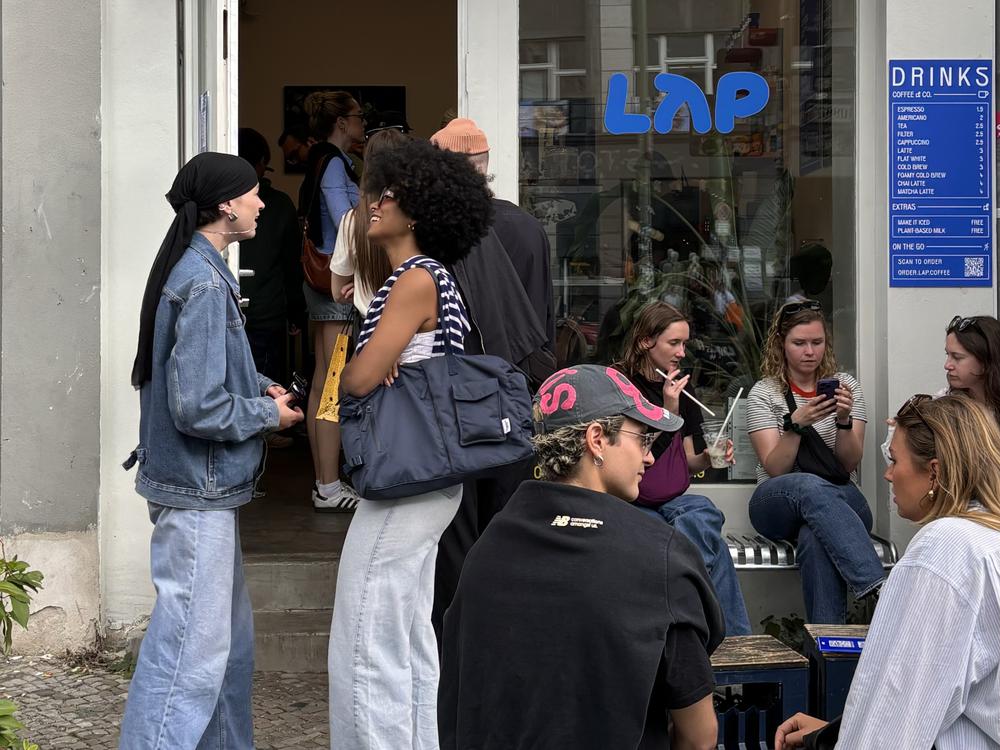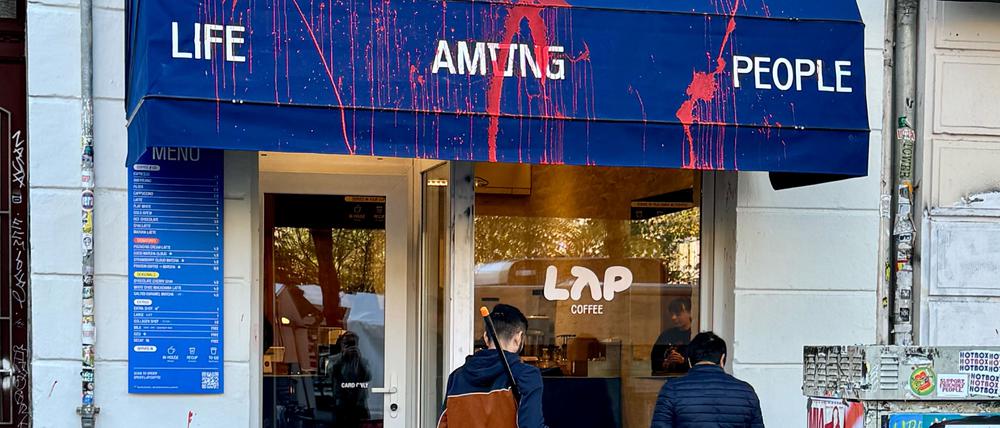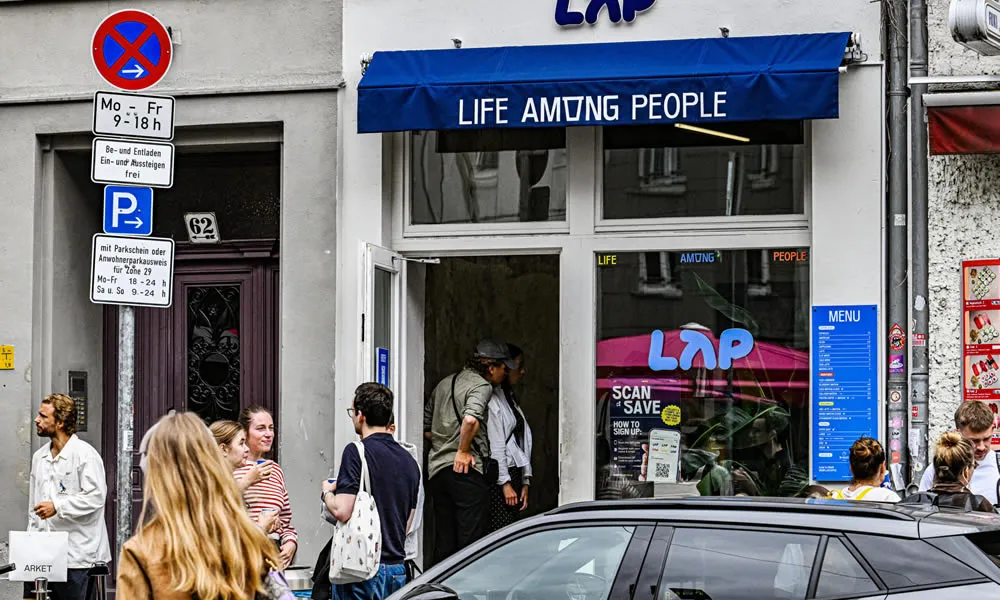In Cyprus, a flat white can now cost 4.10 euros even in a simple paper cup. In Athens, the one euro takeaway coffee with a free bottle of water is a fading memory. And a Parisian on TripAdvisor recently noted that in his neighbourhood, a café au lait and a croissant for 3.50 euros is starting to feel like a rare little miracle. Coffee in Europe has become a proxy for the cost of living crisis, and Berlin is no exception.
But. On a windy November morning in Berlin, the blue paper cups are everywhere. Dangling from cyclists’ handlebars, tucked into coat pockets, balanced on the steps of U Bahn entrances. LAP Coffee, the fast growing newcomer on Germany’s café map, has managed to plant itself firmly into the rhythm of the city. And it has done so with a promise that feels almost old fashioned in northern Europe: a cappuccino for 2.50 euros.

On speed & scale & tensions
The price but also the project according to Euronews has sparked such a heated debate, one that has to do mainly with how LAP landed on the market. Founded in 2023 by tech-scene veterans Ralph Hage and Tonalli Arreola, the company spread rapidly across Berlin, Hamburg and Munich. It didn’t sell an aesthetic or an experience. It sold speed. It sold accessibility. It sold caffeine stripped of rituals and flourishes.
But as the blue cups multiplied, ripples began to form. Independent cafés near LAP branches started noticing quieter mornings. Some saw regulars drifting away. In areas like Mitte and Prenzlauer Berg, where cappuccinos can reach 6 euros, the price gap felt impossible to ignore.
“When a chain comes in with those margins, of course it shifts the balance,” says Philipp Reichel, owner of Isla Coffee in Neukölln, Euronews reports. “It’s not about the coffee. It’s about what survives on a street,” he added.
Reichel’s frustration points to a deeper anxiety: Berlin’s café culture has long been a mosaic of Turkish bakeries, third-wave roasters, anarchic student haunts and family-run spots that survived decades of slow reinvention. LAP’s growth feels to some like a new chapter driven not by neighbourhood needs but by scale and strategy.
The sharpest criticism, however, comes from an anonymous activist collective running a website with the blunt name lapcoffeeistscheisse.de. They accuse LAP of exploiting workers, blocking unionisation, mishandling customer data and intimidating critics. Evidence is thin, but evidence is not exactly the group’s point.
Their aim is to use LAP Coffee as a symbol in a larger fight over how cities evolve: who has access, who controls public space, who profits and who is pushed out.
Split by a cup
The conflict has spilled beyond the digital world and as a reddit user described it "this situation with LAP Coffee is starting to feel like mafia tactics". In late October, several LAP shops across Berlin were splattered with red paint in overnight attacks. Windows dripped crimson by morning, and flyers accusing the chain of harming communities were left behind. Berlin police confirmed at least four attacks across Prenzlauer Berg, Mitte, Kreuzberg, Schöneberg and Kantstrasse. No connection to the activists has been proven, but the symbolism was unmistakable.

Inside the company, Hage insists LAP has been misunderstood. There is no tech empire behind it, he says. No plan for domination. The cups are made from 100 percent recycled material, and LAP is in talks with Berlin’s cleaning service about adding bins near stores to deal with waste. “We’re not trying to damage the café scene,” he says. “We’re trying to make good coffee accessible.”
And that word, accessible, cuts through the entire debate like a fault line. Cheap coffee as empowerment. Cheap coffee as erasure. Cheap coffee as lifeline. Cheap coffee as threat.
Walk down Schönhauser Allee on a weekday morning and you will watch a kind of street theatre: an old-school neighbourhood café on one corner, seating mismatched and familiar and next to it a shiny LAP store, pumping out drinks every thirty seconds. Both are part of Berlin. Both tell the story of a city constantly negotiating its own identity.
And somewhere between the blue cups and the splashes of red paint lies a question that keeps cropping up in European cities: as the cost of living climbs and daily life spins faster, is it too much to ask for a coffee without a side of drama?
